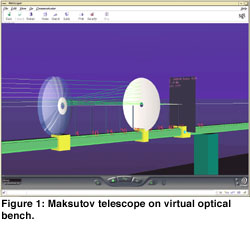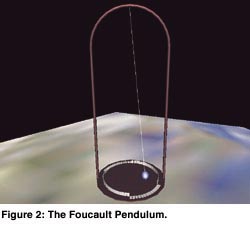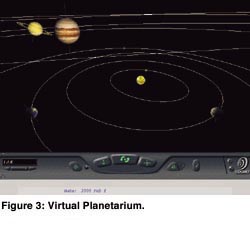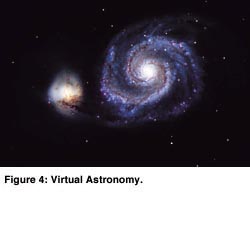




by Detlef Skaley and Udo Zlender
The Virtual Physics and Astronomy (VPA) project is a Web-based innovative learning platform, with multimedia capabilities and intuitive user interfaces, developed at GMD. It is intended for schools, universities, or self-study to learn physics and astronomy.
Today’s life requires accessing information and knowledge in relatively short time scales, which means new methods of knowledge transfer must be established. The Internet has brought forward enormous technical possibilities which not only can compete in many ways with classical text books, but also provides new grounds through it’s multimedia capabilities. Visualisation has always been regarded as an important element to aid in understanding complex scientific theories and experiments which up to recently required rigorous special soft- and hardware requirements. Nowadays, however, graphics, videos, animations, together with appropriate description texts can be accessed directly on the Internet using an ordinary personal computer. Moreover, new learning tools can be established in combination with exercises. In this way the student can learn by experimenting in the virtual worlds. For instance measurements with a simple stop watch could be sufficient to carry out some of these exercises such as computing the mass of a planet.
The project Virtual Physics and Astronomy (VPA) is an innovative learning platform, primarily considered for schools, universities, or self-study to learn physics and astronomy. Through its multimedia capabilities and intuitive user interfaces, VPA enhances the learning effects. The latter is further amplified when visualisation is combined with interactivity which allows the learner to explore the virtual environments individually. Next to 3D representation accurate programming of scientific simulations are essential for such a learning platform. VPA simulations are carried out in Java, hence a standard Web browser, and some additional and freely available plug-ins are the only requirements for using the program on the Internet.
Examples
The virtual optical bench provides examining the laws of geometrical optics. The student may place lenses, mirrors, screens, and light sources on a holding bar to study the light rays in detail. Interesting experiments can be performed by modifying the optical properties of complete instruments by changing the properties of its elements eg, changing the refraction indices or radii of curvature of the lenses (see figure 1).
Physical experiments like the one performed by Jean Leon Foucault in 1851, by which he proved the earth’s rotation can be understood using the Virtual Reality Modelling Language (VRML). Virtual Foucault’s Pendulum may aid the user to determine the geographical latitude by measuring the rotation velocity of the pendulums plane of oscillation (see figure 2).
The Virtual Planetarium allows facts of our solar system to be explored. By navigating freely in 3-dimensional space, the student can study the planets’ orbits relative to the ecliptic plane from different viewpoints. In addition calculations of physical laws in real-time enable the realistic representations of the planets’ motions. The latest development of this software provides Java3D stereoscopic 3D-presentation using recent of-the-shelf 3D-graphics hardware (see figure 3).
Discovering supernovae explosions, neutron stars, black holes, or quasars are some of the outcomes of modern astronomy. Virtual astronomy can help to illustrate and explain some of the exciting cosmic facts. The combination of real images, videos and VRML models of those examples clarifies the important results from that recent field of research. In here a student might be instructed to observe and measure the distance of a galaxy from the oscillation period of a cepheid star. Or perhaps consider two penetrating galaxies, where the mass of the inner galaxy can be determined from the rotational period of the outer galaxies’ debris. The examples mentioned here can be found among many others under http://imk.gmd.de/delta.




Techniques
Although the project consists of a wide range of different topics in Physics and Astronomy, the underlying structure of each individual application is very similar. Most of them consist of three major parts:
Promising future developments like MPEG-4 will be used as they become generally available.
Links:
http://imk.gmd.de/delta
Please contact:
Detlef Skaley - GMD
Tel: +49 2241 14 2987
E-mail: Detlef.Skaley@gmd.de
Udo Zlender - GMD
Tel: +49 2241 14 2485
E-mail: Udo.Zlender@gmd.de